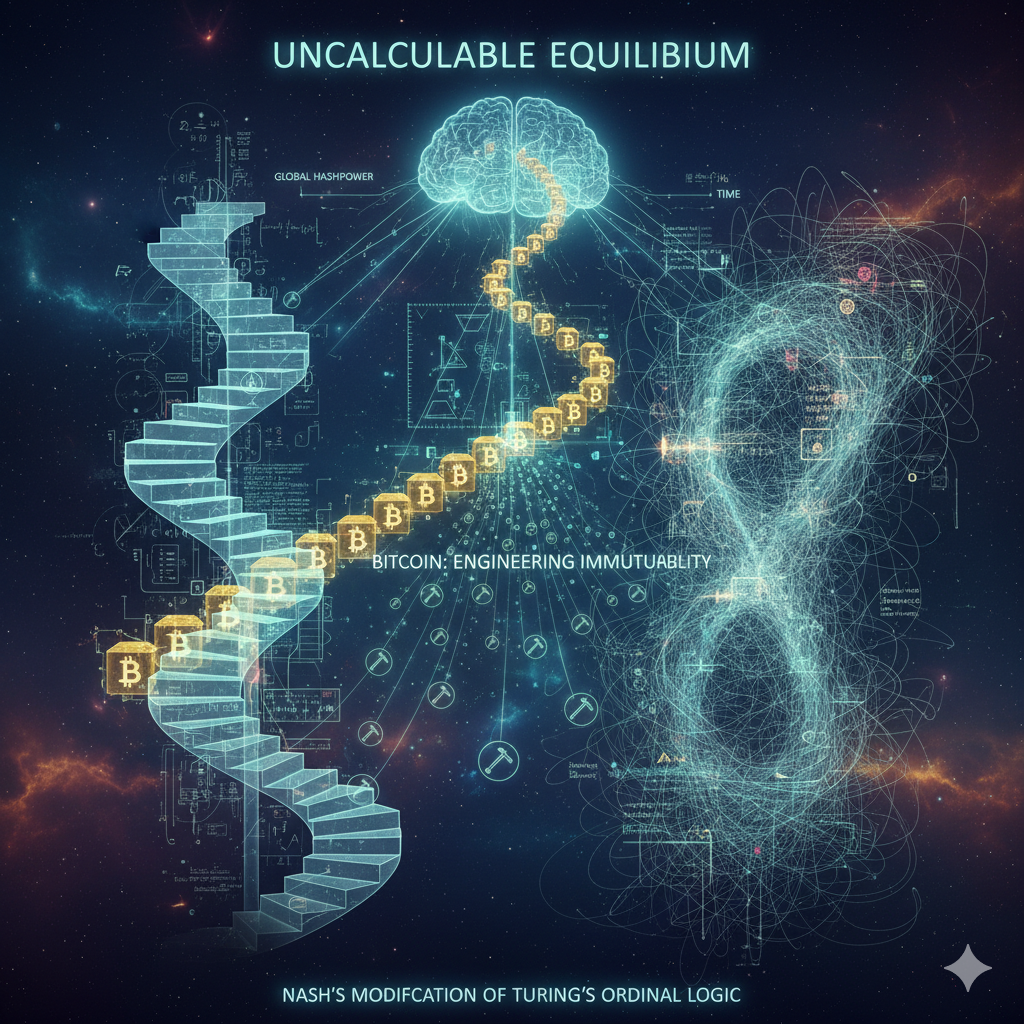
Turing’s proposed ordinal logic system was originally intended to extend formal systems by continuously introducing higher ordinal axioms, thereby resolving the decisional gaps created by Gödel’s incompleteness. However, this system still carried the shadow of “constructiveness”: each extension relied on some recursive process to confirm the new level.
Nash’s contribution lies in building game modeling directly on the level of “infinity,” rather than finite recursive construction. In other words, he did not assume that the system could be gradually extended by some recursive algorithm, but instead took “infinite rationality” of interactions as a premise to seek global equilibrium. This infinity-based setting effectively transformed ordinal logic from “constructive extension” into “incomputable equilibrium.”
The result is: in such a system, no single participant can confirm or decide the “longest chain.” Because the chain’s selection itself is the product of equilibrium, not the endpoint of a recursive process. This makes the system naturally non-centralizable and non-recursivizable. The equilibrium exists, but cannot be computed or predetermined by any single algorithm.
Bitcoin happens to be the engineered implementation of this idea. The longest chain principle may appear to be a simple rule, but in reality it corresponds to the “Nash equilibrium in an incomputable game”: the competition of global hashrate and the advancement of time together shape a unique, irreversible time chain. No individual can predict or control the ultimate direction of this chain, yet globally it always converges to an equilibrium state.
Therefore, Nash’s transformation of Turing’s ordinal logic system reveals the core of Bitcoin’s logic: by starting from infinity and relying on incomputable equilibrium, it eliminates the possibility of centralized confirmation, allowing the system to achieve stability within non-recursiveness.
Original text of Nash’s transformed Turing ordinal logic system here.